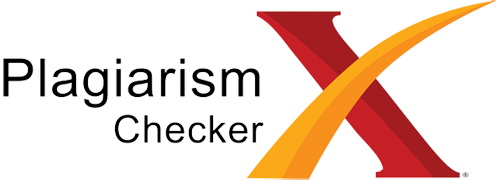Group Work of Communicative Language Teaching Approach for Boosting Speaking Interactive Purposes
DOI:
https://doi.org/10.53863/e-jou.v5i02.1717Keywords:
to boost, classroom action research, communicative language teaching, speaking, expertiseAbstract
This study aims to enhance learners’ speaking competence, as they have experienced various hindrances in acquiring speaking skill during English course. These hindrances include passive classroom environments, uninterested lessons, a lack of interaction, the dominance of the mother tongue over the target language, and other related issues. They found speaking to be challenging, especially for transactional and interpersonal purposes in their English course. As a consequence, the speaking class did not run smoothly. The target participants of this study were 2nd semester students from Technique Informative program at STMIK Pontianak in the Academic year 2024/2025, consisting of thirty students with varying levels of English proficiency. Classroom action research was the research design applied by the researcher, using group work as one of the Communicative language teaching (CLT) approach to assist learners overcoming their speaking difficulties. This study employed both qualitative and quantitative methods. It consisted of two cycles, with three meetings in each cycle. Then, the observation list and speaking tests were used as research instruments to gain data, which were then analyzed using Simple Regression in SPSS ver.25. The outcome clearly proves that group work within the Communicative Language Teaching (CLT) approach significantly boosts learners’ speaking expertise, especially in using interactive language for transactional (delivering information) and interpersonal purposes (maintaining social connection) among learners during communication in the teaching and learning process, both inside and outside the classroom. This improvement is supported by observational data which show a shift in classroom dynamics—from teacher dominance in the first cycle to reduced teacher control and increased student interaction and participation in the second cycle, along with improved students’ speaking performance and also proved from the ANOVA table F is 26.852, sig. 0.00, means there is significant influence of group work of CLT approach in enhancing interactive purposes of learners’ speaking skill of target language
References
Susanti. (2024). Correlation Of CLT Approach and Learners Self Confidence In Enhancing Speaking Expertise. Medium for English Language Teaching [MELT], 9(2), 66-74. DOI: https://doi.org/10.22303/melt.9.2.2024.66-74
Susanto, J. (2012). Communicative competence in teaching speaking. Journal of English and Arabic Language Teaching, 3(1), 69-86.
Zyoud, M. (2016). Theoretical perspective on how to develop speaking skill among university students. Pune research scholar an international multidisciplinary journal, 2(1), 1-10.
Asrida, D. (2016). Communicative activities of teaching speaking for the students. Ta'dib, 17(1), 60-65.
Putri, S. A., Amri, S., & Ahmad, A. (2020). THE STUDENTS’DIFFICULTIES FACTORS IN SPEAKING. J-shelves of indragiri (JSI), 1(2), 115-129. DOI: https://doi.org/10.32520/jsi.v1i2.1059
Dewi, A. A., & Setiana, S. M. (2020, March). Teaching Speaking with Communicative Language Teaching (CLT) Approach. In Journal of Physics: Conference Series (Vol. 1477, No. 4, p. 042017). IOP Publishing. DOI 10.1088/1742-6596/1477/4/042017
Thao, N. T. P. (2023). The Impact of Communicative Language Teaching (CLT) Approach on Students' Speaking Ability in a Public Indonesian University: Comparison between Introverts and Extrovert Groups. International Journal of Language Education, 7(3), 393-413.
Sayera, A. (2019). The Communicative approach in English language teaching. Бюллетень науки и практики, 5(4), 471-475. DOI: 10.33619/2414 2948/41/70
Yasin, B., Aziz, Z. A., & Jannah, R. (2017). Communicative Language Teaching (CLT) for teaching speaking. English Education Journal, 8(3), 322-337.
Suemith, M. E. (2011). The communicative language teaching approach: Theory and practice. Magister Scientiae, (30), 1-9. DOI: https://doi.org/10.33508/mgs.v0i30.627
Haliwanda, U. (2021). The effect of using the Communicative Language Teaching (CLT) approach in teaching speaking. Elite: English and Literature Journal, 8(2), 40-53. DOI: https://doi.org/10.24252/10.24252/elite.v8i2a4
Gustiani, S. (2012). The communicative language teaching: Review on own experience in ELT at English Department, Sriwijaya State Polytechnic, Palembang. Epigram, 9(1). https://doi. Org/10.32722/epi.v9il.42
Salmanova, S. (2025). Communicative Approach in Foreign Language Teaching: Advantages and Limitations. EuroGlobal Journal of Linguistics and Language Education, 2(1), 79-88. DOI: https://doi.org/10.69760/egjlle.250009
Hengki, H., & Ratna, R. (2019). The Use of Communicative Language Teaching (CLT) Approach Through English Village For Improving An Transactional Language Function of Speaking Skill. AL-ULUM: Jurnal Ilmu Sosial dan Humaniora, 5(2). DOI: http://dx.doi.org/10.31602/alsh.v5i2.2490
Amir, M. N., & Adijaya, N. (2023). The Effect of Transactional Dialogue in Teaching Speaking Modalities. English Language in Focus (ELIF), 6(1), 89-100. DOI: https://doi.org/10.24853/elif.6.1.89-100
Nuha, U. (2014). Transactional and Interpersonal Conversation Texts in English Textbook. Register Journal, 7(2), 205-224. DOI: https://doi.org/10.24853/elif.6.1.89-100
Alamri, W. A. (2018). Communicative language teaching: Possible alternative approaches to CLT and teaching contexts. English Language Teaching, 11(10), 132-138.
Abdelmageed, N. A. T., & Omer, M. A. A. (2020). THE EFFECTIVENESS OF USING COMMUNICATIVE LANGUAGE TEACHING APPROACH (CLT) IN DEVELOPING STUDENTS’SPEAKING SKILLS FROM TEACHERS’PERCEPTIONS. European Journal of English Language Teaching.DOI : 10.5281/Zenodo.3786139
Mislawiyadi, M. (2023). Using a communicative approach to teaching speaking skills at Ibrahimy University. Jurnal Multidisiplin Ibrahimy, 1(1), 36-52. DOI: https://doi.org/10.35316/jummy.v1i1.3536
Susanti, S. (2018). The Use of Jigsaw II to Teach Reading to STMIK Students. Mimbar Pendidikan, 3(1), 83-94. DOI: https://doi.org/10.17509/mimbardik.v3i1.10641
Susanti, S. (2023). Aplikasi TikTok Sebagai Media Untuk Meningkatkan Keterampilan Berbicara bahasa Inggris. Seminar Nasional CORISINDO. STMIK Pontianak.
Lumy, J. (2021). Enhancing Students’ Speaking Skill Using Communicative Language Teaching Method.
Journal of English Language and Literature Teaching, 6(2).
Ary, D., Jacobs, L. C., Irvine, C. K. S., & Walker, D. A. (2018). (BINARY Observational checklist citation) Introduction to Research in Education (10th ed.). Cengage Learning.
Downloads
Published
How to Cite
Issue
Section
License
Copyright (c) 2025 Susanti Susanti

This work is licensed under a Creative Commons Attribution-ShareAlike 4.0 International License.
Authors retain copyright and grant the journal right of first publication with the work simultaneously licensed under a Creative Commons Attribution-ShareAlike 4.0 International License that allows others to share the work with an acknowledgment of the work’s authorship and initial publication in this journal













